Heading out for a hike can be a refreshing escape and a fantastic way to connect with nature. But if you’re not careful, what starts as a peaceful stroll can quickly become a frustrating misadventure. Here’s a guide to help you sidestep some common pitfalls and keep your hiking experience enjoyable from start to finish. Let’s dive into some rookie mistakes to avoid when planning your trek.
1. Ignoring The Weather
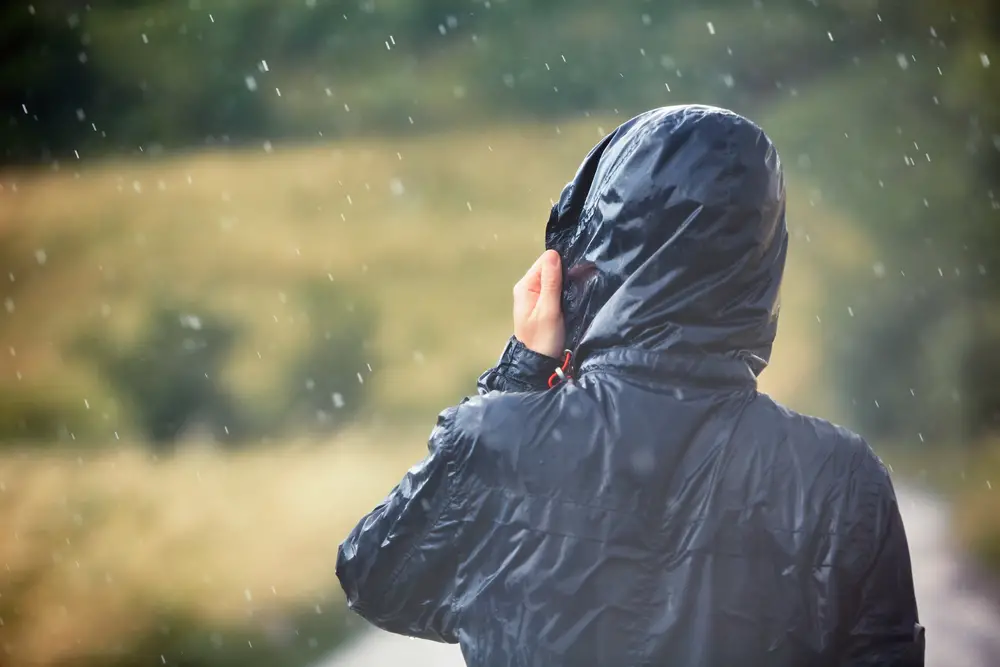
One of the biggest mistakes you can make is disregarding the weather forecast before heading out. Weather conditions can turn on a dime, especially in mountainous or forested areas. You might start your hike under clear skies, only to find yourself caught in a downpour or even a snowstorm. According to meteorologist Dr. Chris Fischer, “Hiking in unexpected weather can increase the risk of hypothermia or heatstroke, depending on the conditions.” It’s crucial to check reliable weather sources and prepare for potential changes by packing appropriate gear.
Beyond just checking the weather, it’s essential to understand how different conditions impact your hike. Rain can make trails slippery, while excessive heat can lead to dehydration. If you’re hiking in an area known for sudden weather shifts, becoming familiar with local weather patterns can be beneficial. Bring along waterproof gear, extra layers, or sun protection as needed. Adjust your plans or turn back if the weather seems dangerous—there’s no shame in prioritizing safety over reaching a destination.
2. Underestimating Trail Difficulty
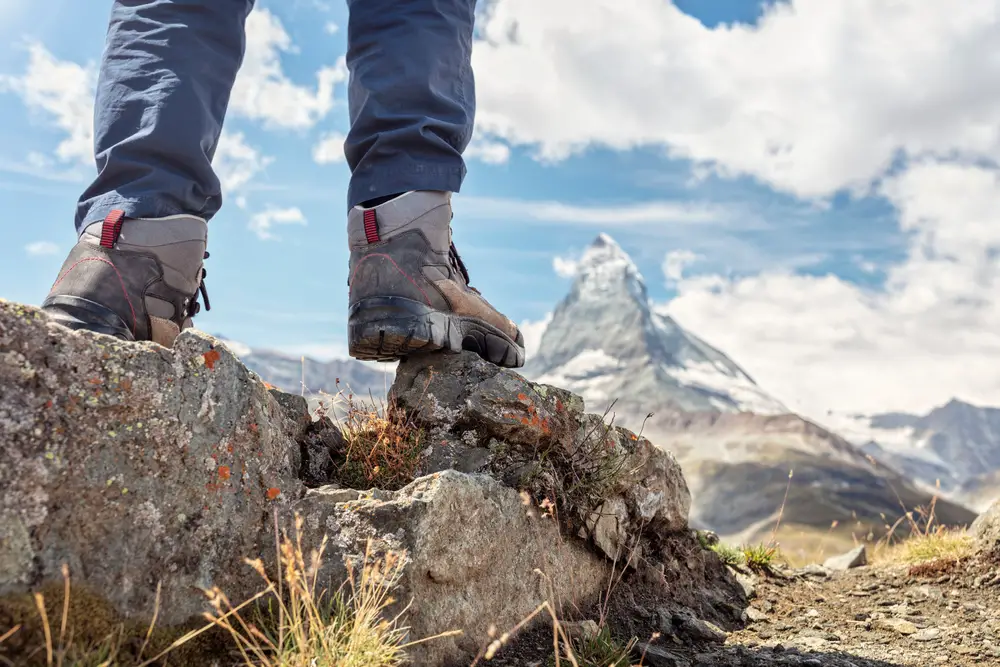
It’s easy to look at a map and think you can tackle a trail, but underestimating its challenge can quickly lead to trouble. Trail ratings often take into account not just distance, but also elevation changes and terrain difficulty. A trail that seems short might be steep and full of obstacles, requiring much more energy than expected. If you’re not used to such exertion, you might find yourself exhausted halfway through, with a long trek back to your starting point. It’s important to honestly assess your fitness level before committing to a hike.
When planning, choose trails that match your experience and physical condition. If you’re new to hiking, start with shorter, well-marked trails and gradually work up to more challenging ones. Consider factors like the length of the trail and the type of terrain, whether it’s rocky, steep, or flat. Also, look into the elevation gain—it’s often more telling of a trail’s difficulty than distance alone. Taking the time to research and plan will make your experience far more enjoyable.
3. Skipping Map And Compass Navigation
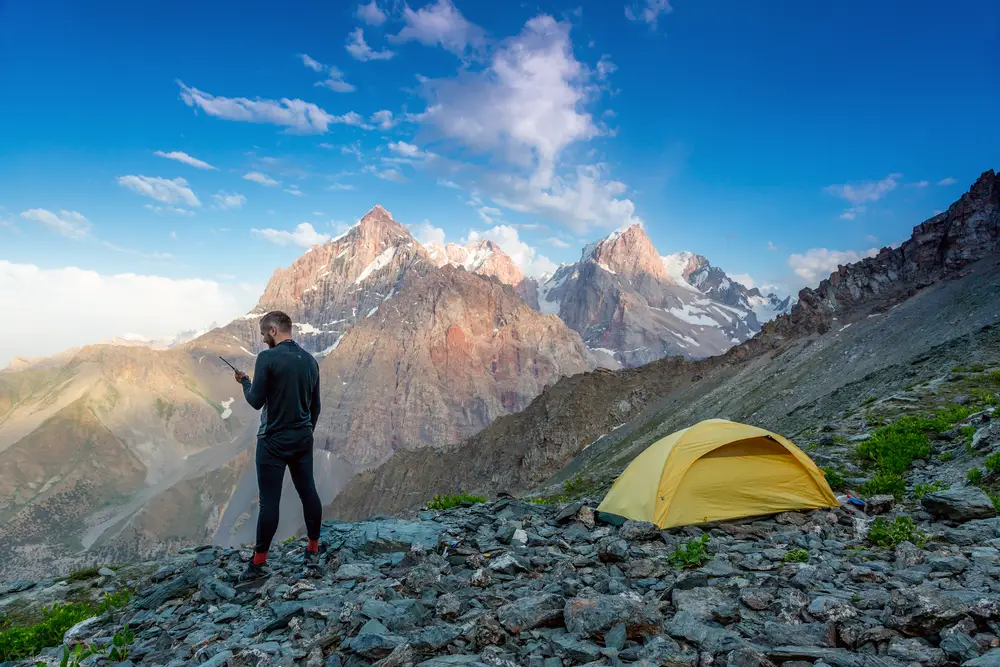
In today’s digital age, it’s tempting to rely solely on your smartphone for navigation. While GPS can be helpful, it’s not foolproof—batteries die, signals drop, and phones can malfunction. According to outdoor expert Rebecca Caldwell, “Having a physical map and compass as a backup is crucial for navigation, especially in remote areas.” Many hikers don’t realize that understanding how to use these tools can be a lifesaver if technology fails. It’s a skill that can make the difference between a safe journey and a confusing, potentially dangerous situation.
Even if you’re going on a well-traveled trail, having a map and compass can provide peace of mind. Practicing how to read a map and use a compass in a controlled environment is a wise move before venturing into the wild. Knowing your exact location and being able to identify landmarks will help you feel more secure. Plus, it adds an extra layer of adventure by engaging with nature in a more traditional way. Relying on technology alone is a common oversight that can easily be avoided with a bit of preparation.
4. Not Packing Enough Water

Dehydration is a serious risk when hiking, and it’s one that many beginners overlook. It’s easy to underestimate how much water you’ll need, especially on longer hikes or in hot weather. Your body loses water through sweat, and if you’re not replenishing that loss, you could face dehydration. This can lead to fatigue, dizziness, and in severe cases, heat exhaustion or heat stroke. Carrying a sufficient supply of water and a method of purifying natural sources can prevent these issues.
Consider the length and intensity of your hike to determine how much water to bring. A general rule of thumb is to drink about half a liter of water per hour of moderate activity in moderate temperatures. Bringing a reusable water bottle with measurements can help you monitor your intake. Additionally, pack a portable water filter or purification tablets if you need to refill from natural sources along the trail. Planning ahead ensures that you stay hydrated and energized throughout your hike.
5. Forgetting First-Aid Essentials
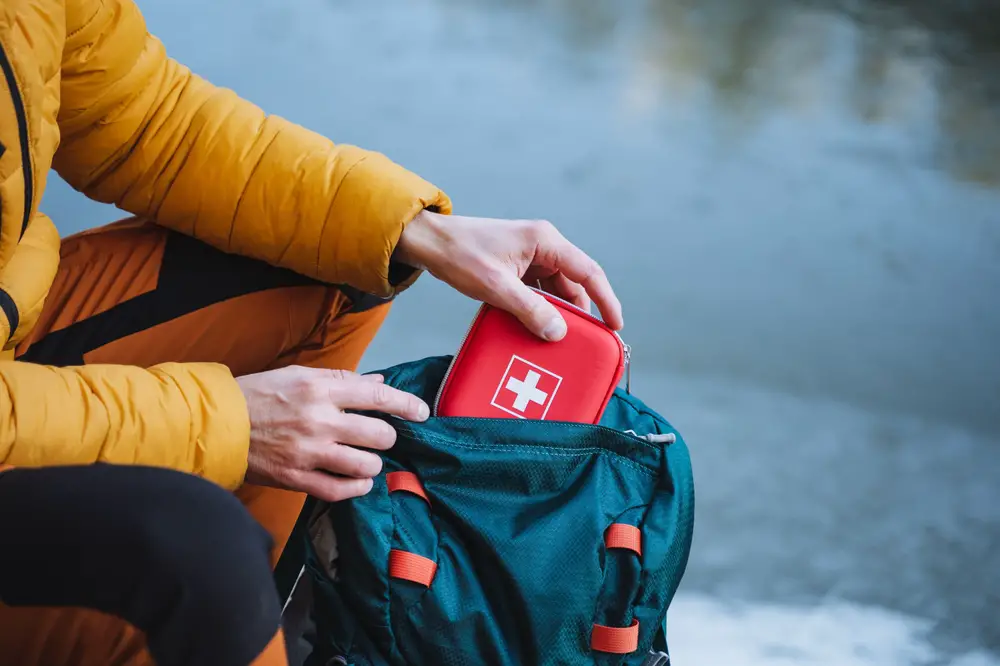
Accidents happen, and when you’re out in nature, minor injuries can escalate if not treated promptly. Some hikers venture into the woods without even a basic first-aid kit, which can be a significant oversight. According to emergency physician Dr. Laura Bennett, “Carrying a well-stocked first-aid kit is essential for treating common hiking injuries like cuts, blisters, and sprains.” It doesn’t take much to pack a small kit with bandages, antiseptic wipes, and pain relievers. In addition to addressing injuries, it can also provide comfort and peace of mind.
Equip yourself with the knowledge of basic first-aid techniques before your hike. You should know how to clean and dress a wound, treat sprains, and handle blisters, which are common on long treks. Your kit should be easily accessible so it’s ready whenever needed. Include any personal medications you might require, as forgetting these can turn a simple hike into an emergency. Being prepared with the right supplies can make all the difference when dealing with unexpected injuries.
6. Wearing The Wrong Footwear

Choosing the right footwear for your hike is crucial for comfort and safety. Sneakers or casual shoes might seem adequate, but they often lack the support and protection needed for rugged terrain. Hiking boots or trail shoes are designed specifically for these environments, offering durability and good traction. Improper footwear can lead to blisters, sprained ankles, or worse, a fall on uneven ground. Before setting out, invest in a pair of comfortable, well-fitted hiking shoes or boots.
When selecting footwear, consider the type of terrain and the length of your hike. For rocky or muddy paths, waterproof boots with good ankle support are ideal. If you’re sticking to well-maintained trails, lighter trail running shoes might suffice. Break in any new footwear with shorter walks to avoid blisters on longer hikes. Your feet are your most important asset on the trail, so treat them well to ensure a more pleasant outing.
7. Overpacking Or Underpacking
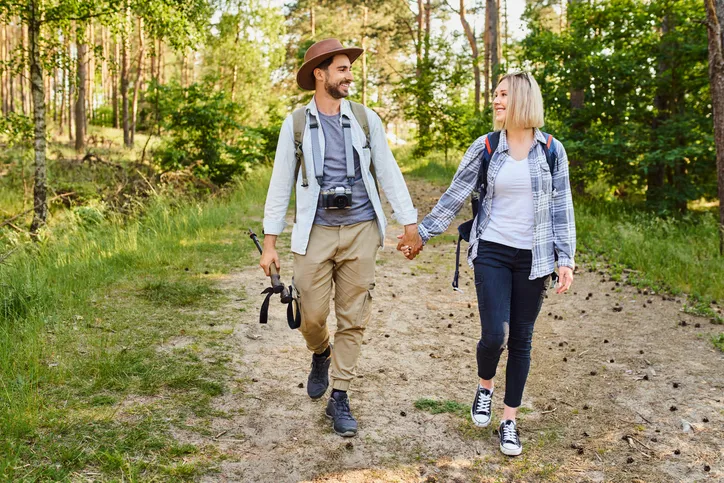
Packing for a hike can be a balancing act. Bringing too much gear can weigh you down and make your hike uncomfortable; leave out important items, and you could find yourself in trouble. According to backpacking expert Tom Hennessey, “It’s crucial for hikers to learn the art of packing light while still being prepared for emergencies.” Focus on essentials like food, water, navigation tools, and first-aid supplies. Cut down on unnecessary items that add bulk without adding value to your journey.
Before you start packing, create a checklist of items you’ll need based on the hike’s duration and difficulty. For a day hike, you won’t need as much as you would for an overnight trip, but some essentials are non-negotiable. Test the weight of your pack before you head out to ensure it’s manageable. Consider investing in lightweight, multi-purpose gear to save space and weight. A well-packed bag can make your hike more enjoyable by keeping you prepared without slowing you down.
8. Misjudging Your Pace

It’s tempting to charge forward when you’re excited about a hike, but starting too fast can quickly drain your energy. Many beginners misjudge their pace, leading to burnout halfway through the journey. It’s crucial to find a sustainable rhythm that allows you to cover ground without wearing yourself out. Hiking is not a race, and maintaining an even pace will help you enjoy the experience and conserve your energy. Assessing the terrain and your fitness level can help determine a suitable speed.
Try to listen to your body and take breaks when needed. If you’re hiking with a group, communicate openly about pace to ensure everyone is comfortable. Pay attention to your breathing; if you’re too out of breath to hold a conversation, it’s a sign to slow down. It’s better to reach your destination feeling strong rather than exhausted. By pacing yourself, you’ll have the stamina to fully enjoy the beauty around you without feeling rushed or stressed.
9. Disregarding Wildlife

Encountering wildlife can be one of the highlights of a hike, but it’s important to remember that animals are not always friendly. Disregarding signs or warnings about local wildlife can put you in danger. Animals like bears, snakes, or even certain insects can pose risks if you’re not prepared to handle encounters responsibly. Keeping a safe distance and respecting their space is crucial for your safety and theirs. Understanding local wildlife and how to react can prevent negative interactions.
Educate yourself on the specific animals you might encounter on your hike. Knowing how to react to different species, like making noise to deter bears or standing still for snakes, can be vital. Keep food securely stored to avoid attracting unwanted attention from curious critters. Remember, you’re a visitor in their habitat, so it’s important to follow guidelines and respect boundaries. Smart interactions with wildlife ensure both your safety and the animals’ well-being.
10. Not Telling Anyone Your Plans

Heading out on a hike without informing anyone is a big gamble. Should something go wrong, like getting lost or injured, having someone aware of your plans increases the chances of a timely rescue. It’s easy to assume that nothing will go wrong, but even experienced hikers can find themselves in unexpected situations. Sharing your itinerary with a friend or family member is a simple step that can make a huge difference. Provide details like your planned route, expected return time, and contact information.
Make it a habit to check in before and after your hike. This can be as simple as sending a quick text or leaving a note with your plans. In the event of an emergency, having someone who knows your whereabouts can expedite help. It’s also a good idea to know the area’s emergency contact numbers and have a plan for communicating if cell service is unavailable. Taking these precautions ensures that help will be on the way if you run into trouble.
11. Not Acclimating To Altitude

If you’re hiking at higher elevations, acclimating to the altitude is essential. The air is thinner, which means less oxygen, and this can affect your performance and health. Jumping into a high-altitude hike without preparation can lead to altitude sickness, which includes symptoms like headaches, nausea, and fatigue. It’s important to give your body time to adjust, especially if you’ve traveled from sea level. Spending a day or two at a moderate elevation before your hike can help your body acclimate.
Listen to your body and be aware of how altitude is affecting you. If you start to feel unwell, it’s crucial to descend to a lower elevation as soon as possible. Stay hydrated and pace yourself, as exertion can worsen symptoms of altitude sickness. If you’re traveling with others, check in with your group to ensure everyone is feeling okay. Proper acclimation can make your high-altitude hiking experience safe and enjoyable.
12. Leaving Without Checking Your Gear
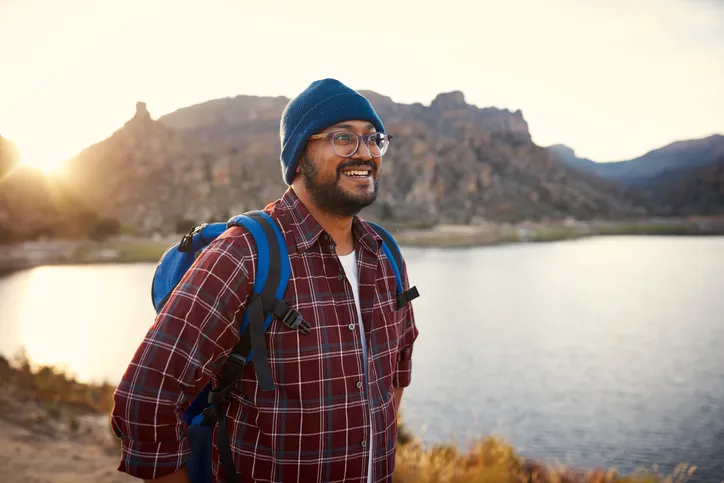
Imagine getting to the trailhead only to realize you’ve forgotten an essential piece of gear or that something’s broken. Many hikers make the mistake of not checking their equipment before leaving home. This oversight can lead to inconveniences or even dangerous situations on the trail. A missing water bottle or defective flashlight might not seem like a big deal, but once you’re out there, it can be. Regularly inspecting your gear and confirming you have everything you need is a necessary pre-hike ritual.
Set aside time before your hike to lay out and review all of your gear. Check items like flashlights for batteries, tents for tears, and boots for wear and tear. Pack your bag methodically, making sure that each essential item is accounted for. This habit can help ensure you don’t leave anything important behind. Taking a few extra minutes to verify your gear can save you a lot of hassle and keep your hike on track.
13. Ignoring Trail Etiquette
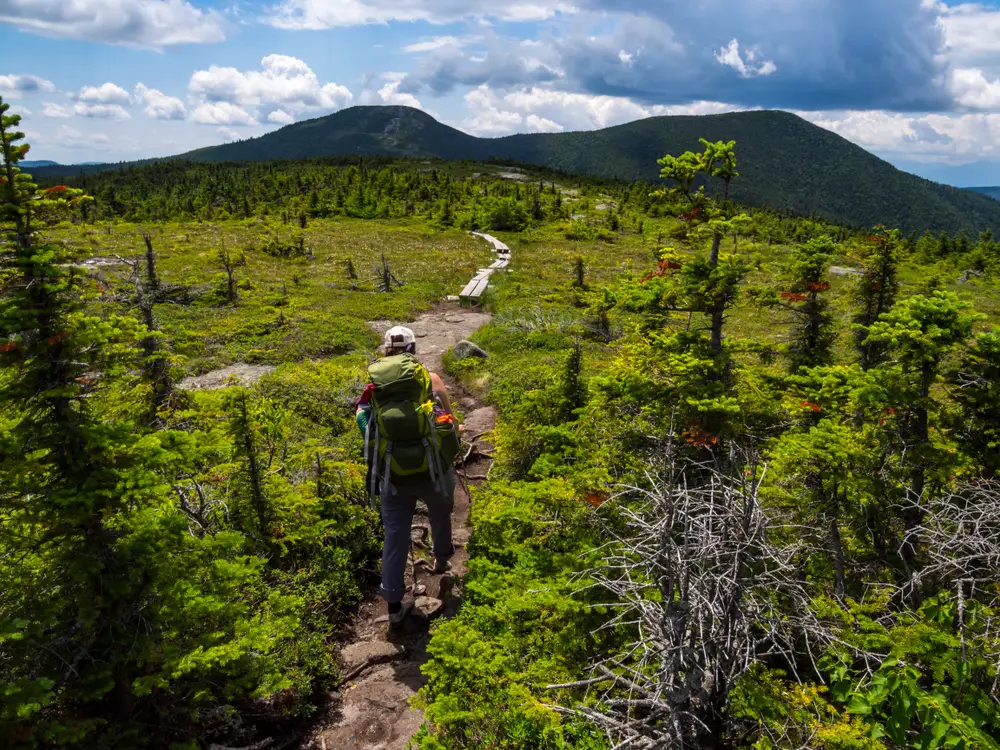
Trail etiquette might not be the first thing on your mind when hiking, but ignoring it can cause problems for you and others. Simple practices like yielding to other hikers, not blocking the trail, and leaving no trace help keep trails enjoyable for everyone. Being considerate of others enhances the experience and preserves the environment. If you’re hiking with a group, keeping noise levels down and sticking to marked trails shows respect for the surroundings. Understanding and following trail etiquette is a key part of responsible hiking.
Familiarize yourself with specific etiquette rules for the trail you’re visiting, as some areas have unique guidelines. Remember that uphill hikers have the right of way, and if you’re taking a break, stepping off the trail helps others pass easily. Pack out all of your trash, and be mindful of nature by not disturbing plants or wildlife. These small actions contribute to the sustainability of the trails we love. By respecting trail etiquette, you help ensure that natural spaces remain pristine and welcoming for years to come.
